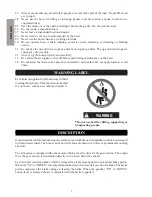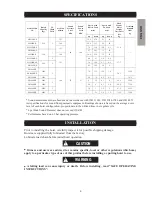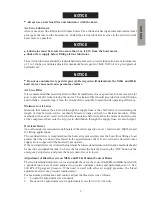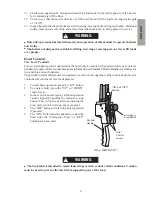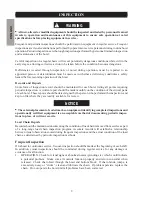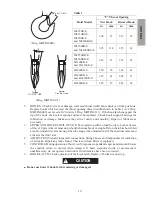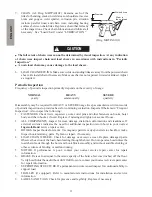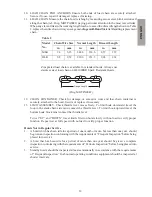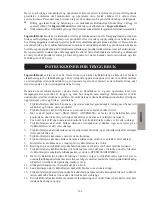
ENGLISH
This manual has been produced by
Ingersoll-Rand
to provide dealers, mechanics, operators and
company personnel with the information required to install and operate the products described
herein.
It is extremely important that mechanics and operators be familiar with the servicing procedures of
these products, or like or similar products, and are physically capable of conducting the procedures.
These personnel shall have a general working knowledge that includes:
•
Proper and safe use and application of mechanics common hand tools as well as special
Ingersoll-Rand
or recommended tools.
•
Safety procedures, precautions and work habits established by accepted industry standards.
Ingersoll-Rand
can not know of, nor provide all the procedures by which product operations or
repairs may be conducted and the hazards and/or results of each method. If operation or maintenance
procedures not specifically recommended by the manufacturer are conducted, it must be ensured that
product safety is not endangered by the actions taken. If unsure of an operation or maintenance
procedure or step, personnel should place the product in a safe condition and contact supervisors and/
or the factory for technical assistance.
SAFE OPERATING INSTRUCTIONS
Ingersoll-Rand
recognizes that most companies who use hoists have a safety program in force in
their plants. In the event you are aware that some conflict exists between a rule set forth in this
publication and a similar rule already set by an individual company, the more stringent of the two
should take precedence.
Safe Operating Instructions are provided to make an operator aware of unsafe practices to avoid and
are not necessarily limited to the following list. Refer to specific sections in the manual for additional
safety information.
1.
Only allow people, trained in safety and operation of this product, to operate the hoist.
2.
Only operate a hoist if you are physically fit to do so.
3.
When a “DO NOT OPERATE” sign is placed on the hoist or controls, do not operate the hoist
until the sign has been removed by designated personnel.
4.
Before each shift, the operator should inspect the hoist for wear or damage.
5.
Never us a hoist which inspection indicates is worn or damaged.
6.
Periodically, inspect the hoist thoroughly and replace worn or damaged parts.
7.
Lubricate the hoist regularly.
8.
Do not use hoist if hook latch on a hook has been sprung or broken.
9.
Check that the hook latches are engaged before using.
10. Never splice a hoist chain by inserting a bolt between links.
11. Only lift loads less than or equal to the rated capacity of the hoist. See “SPECIFICATIONS”
section.
12. When using two hoists to suspend one load, select two hoists each having a rated capacity equal
to or more than the load. This provides adequate safety in the event of a sudden load shift.
13. Never place your hand inside the throat area of a hook.
14. Never use the hoist load chain as a sling.
15. Never operate a hoist when the load is not centered under the hook. Do not “side pull” or “yard.”
16. Never operate a hoist with twisted, kinked, “capsized” or damaged load chain.
17. Do not force a chain or hook into place by hammering.
18. Never insert the point of the hook into a chain link.
19. Be certain the load is properly seated in the saddle of the hook and the hook latch is engaged.
20. Do not support the load on the tip of the hook.
21. Never run the load chain over a sharp edge. Use a sheave.
22. Pay attention to the load at all times when operating the hoist.
2




